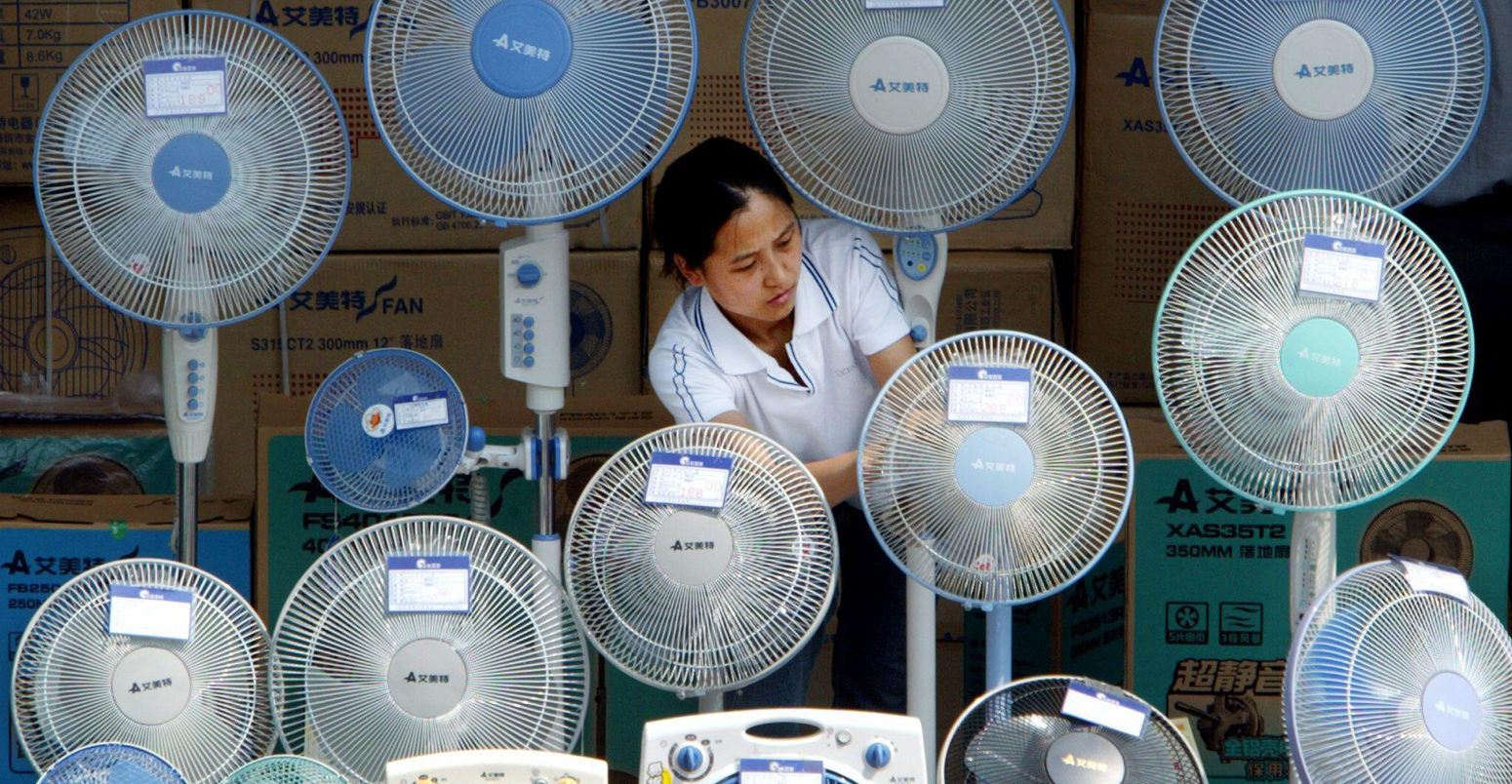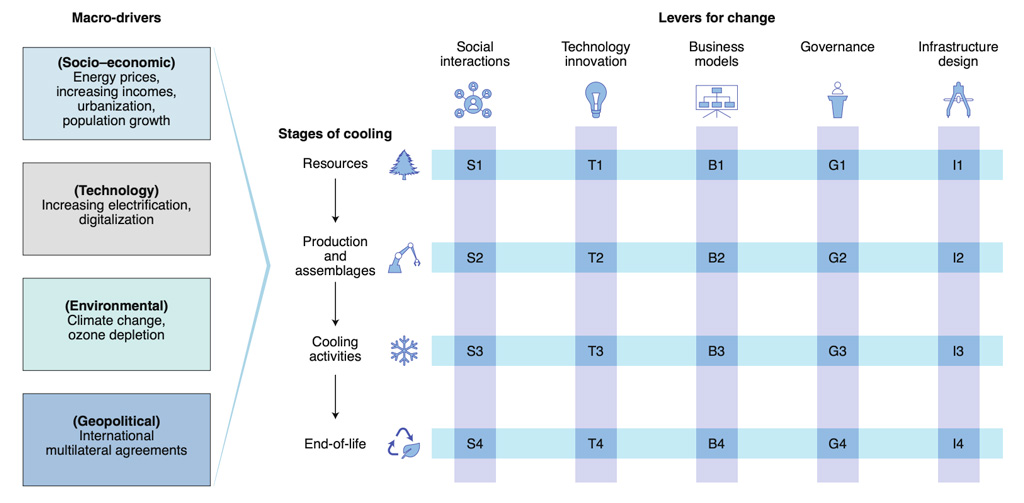
Guest post: Demand for cooling is blind spot for climate and sustainable development

Dr Radhika Khosla
10.19.20
Dr Radhika Khosla
19.10.2020 | 4:00pmWith rising global temperatures and increasingly severe heatwaves, much of the world’s population is vulnerable to the growing health risks of extreme heat.
Cooling is critical for human wellbeing, health and the functioning of society. It enables thermal comfort of societies at high temperatures and is critical for industrial production and for the preservation of food and medicine.
Climate change – alongside increasing affluence, space and comfort needs – means the world is facing an unprecedented growth in cooling demand. This has the potential to drive one of the most substantial increases in energy and greenhouse gas emissions in recent history.
However, despite the central role of cooling in climate change and sustainable development, the risks and benefits of sustainable cooling remain a global blind spot.
In a new “perspective” paper, published in Nature Sustainability, my colleagues and I explore the links between cooling and the United Nations Sustainable Development Goals (SDGs), and put together a framework to help identify solutions to deliver sustainable cooling for all.
Feedback loop
According to the International Energy Agency’s (IEA) “Future of Cooling” report, there were 1.6bn air conditioning units in use around the world in 2018. The power needed to keep air conditioners and electric fans running accounts for 20% of global electricity use.
And this is set to increase. The IEA projects that the energy demand from air conditioners will triple by 2050 – equivalent to adding 10 new air conditioners every second for the next 30 years. Powering all these extra units will require an additional electricity generation capacity equal to that of the US, EU and Japan combined.
This increased electricity demand risks locking the world into a feedback loop, where demand for cooling energy drives further greenhouse gas emissions and results in even more global warming – necessitating further cooling.
An alternative approach to the current provision of cooling by traditional air conditioning is that of “sustainable cooling”. By this, we mean the provision of cooling in a manner that maximises its contribution to the SDGs – for example, by minimising health impacts from extreme heat, reducing greenhouse gases, avoiding food loss, and reducing societal inequalities.
Cooling and sustainable development
Despite the extraordinary projections for its growth, the demand for cooling does not appear in any of the UN’s 2030 Agenda for Sustainable Development, the 17 goals, or their 169 targets.
As part of our research, we examined thousands of peer-reviewed papers and grey literature. We identified a series of evidence-based examples of how cooling can contribute to the achievement of the SDGs, demonstrating that cooling is directly linked to all 17 SDGs.
While the impact of cooling on energy and sustainable cities might be obvious, cooling is implicated in all of the other goals as well. For example:
No poverty (SDG 1): Increased extreme heat without cooling provisions is linked to lower productivity from land and income, exacerbating poverty especially in developing countries. Reduced cooling from decreased urban green spaces is also linked to increased income poverty.
Quality education (SDG 4): Performance of pupils in schools reduces considerably where hot weather cannot be offset by the availability of cooling.
Gender equality (SDG 5): Household food-related activities are often women’s responsibilities, and the opportunities from cooling and refrigeration enable women to undertake small businesses and reduce time spent on daily food provision.
Framework for sustainable cooling
With such potential benefits for providing cooling, there is a pressing need to identify sustainable options that do not worsen climate change.
Our paper puts forward a new analytical framework for considering sustainable cooling, which you can see in the figure below. We consider cooling in terms of both “active” measures – relying on an external device to transfer heat – and “passive” measures – using the design of a building to manage heat gain and help dissipate heat.

We categorise the different stages of delivering cooling across the whole lifecycle. These includes:
- Resources: the provision of natural raw materials including their extraction and pre-processing;
- Production and assemblages: how resources are combined into a passive or active form of cooling and their deployment;
- Cooling activities: encompasses purchasing, operating and maintaining the service of cooling to meet demand;
- End-of-life: including removal or decommissioning of forms of cooling, often leading to reuse.
The framework also considers the overarching “macro” drivers that influence how the cooling system evolves are. These include:
- Socio-economic trends of urbanisation, economic development and population growth trends, especially in developing countries with hotter climates;
- Technology trends;
- Environmental trends such as climate change induced heatwaves;
- Geopolitics trends reflected in international multilateral agreements, such as the Paris Agreement.
Finally, the framework identifies an encompassing set of five “levers” capable of driving sustainable system change. These interconnected levers are:
- Social interactions, such as the role for the individual behaviours and lifestyles;
- Technology innovation, including energy-efficient and affordable passive and active cooling;
- Business models, such as providing cooling as a service;
- Governance, including regulations for deployment of efficient air conditioning units;
- Infrastructure design, such as space design that predetermines cooling demand.
Exemplar sustainable cooling solutions
The ways that the four “stages” and five “levers” intersect creates a set of 20 interconnected “intervention points” where there is an opportunity to initiate change.
Here are two examples, each with the potential to shift the balance between natural and human-made capital towards more sustainable outcomes:
1. Embedding passive and energy-efficient sustainable cooling in urban infrastructure (intervention point I2)
Towns and cities will hold 66% of the global population by 2050, making them an epicentre of cooling demand. Urban infrastructures with energy efficient passive cooling, such as increasing vegetation through street trees, green façades and green roofs, hold much potential for reducing cooling demand. For example, in Xiamen Island in China, the integration of green roofs reduced average land surface temperature by 0.91C.
2. Linking cooling to climate action and refrigerant phase-down in global environmental agreements (intervention points G1 and G4)
The Kigali amendment to the Montreal Protocol aims to reduce use of hydrofluorocarbons (HFCs) by 80% by 2047. (HFCs are potent greenhouse gases as well as being ozone depleting.) Combining HFC phase out with improved energy efficiency of cooling has considerable potential to help limit warming. However, this requires greater coordination from the institutional frameworks by linking the SDGs to the Montreal Protocol at the global level as well as to regional and national cooling plans.
As the importance of cooling gains prominence, the implications of cooling decisions on other SDGs will become increasingly crucial.
Climate change presents one such example. As countries around the world progress towards net-zero emissions, this will have serious implications for cooling technological and infrastructure decisions (and vice versa), which are set to rapidly grow in the same timeframe.
Our work provides a framework to foster sustainable cooling – as well as putting forward an agenda for research and practice for cooling to deliver on sustainable development.
Khosla, R. et al. (2020) Cooling for sustainable development, Nature Sustainability, doi:10.1038/s41893-020-00627-w
-
Guest post: Demand for cooling is blind sport for climate and sustainable development
-
Guest post: How to make cooling sustainable in a warming world

